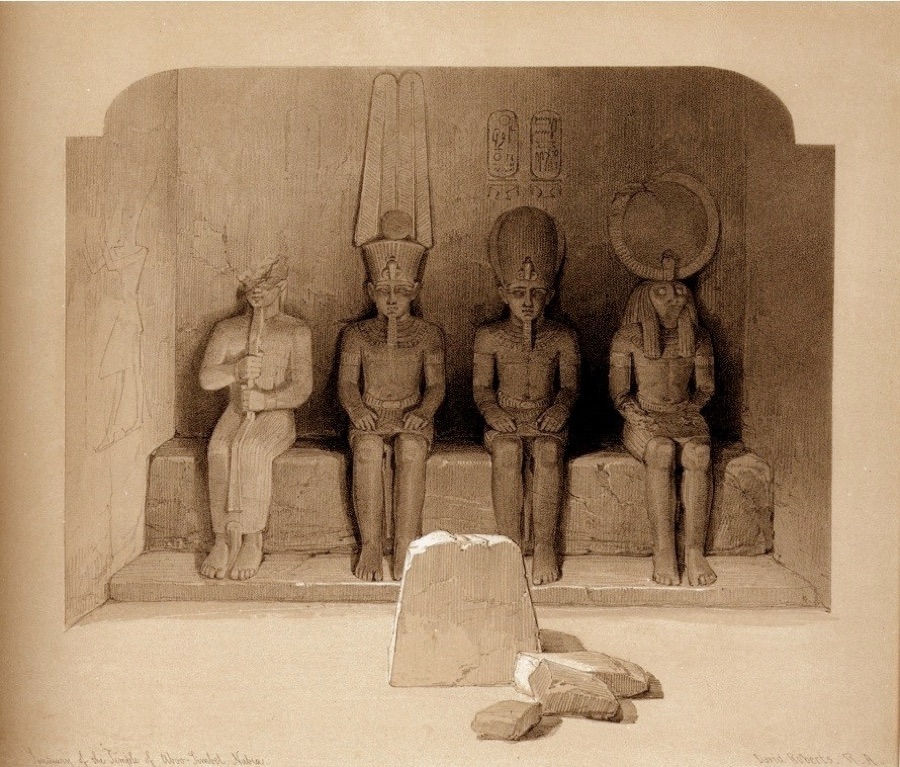THE SANCTUARY OF THE GREAT TEMPLE OF ABOO-SIMBEL, NUBIA.
THE adytum of the Temple, which terminates the great excavation at Aboo-Simbel, and is seen only in the gloom of its profundity in the larger drawing of the Interior, is a chamber which measures, from the door of the Sanctuary to the wall behind the figures, twelve feet three inches, and in width twenty-three feet seven inches. In this cella are four sitting statues; three of them the Theban triad of deities, the fourth is Remeses, who is here admitted to a seat among them.
Roberts says that the statues in the Sanctuary have been painted of various colours; before them is an altar, cut, like the figures themselves, out of the solid rock; it is squared on the sides, and formed like a truncated pyramid: the top of it is broken. On the sides of the wall, about two feet in advance of the altar, are the marks of grooves, with holes for fastenings for a screen, probably of open-work and metal, to prevent too near an approach of the worshippers, if they were ever allowed to proceed so far. The sandstone is soft in which these statues are hewn. The statue on the left has an ornament reaching from his chin down nearly to his feet; the second has a head-dress like the tutulus, or palm-branch; the third wears a sort of helmet; and the last is the hawk-headed deity. This is said to be the oldest of the Nubian or the Egyptian Temples: if the arts were thus advanced at so remote a period as the construction of this Temple, what has become of those that preceded it? for such excellence could only have sprung from progressive improvement.
Wilkinson’s Egypt and Thebes. Roberts’s Journal.


